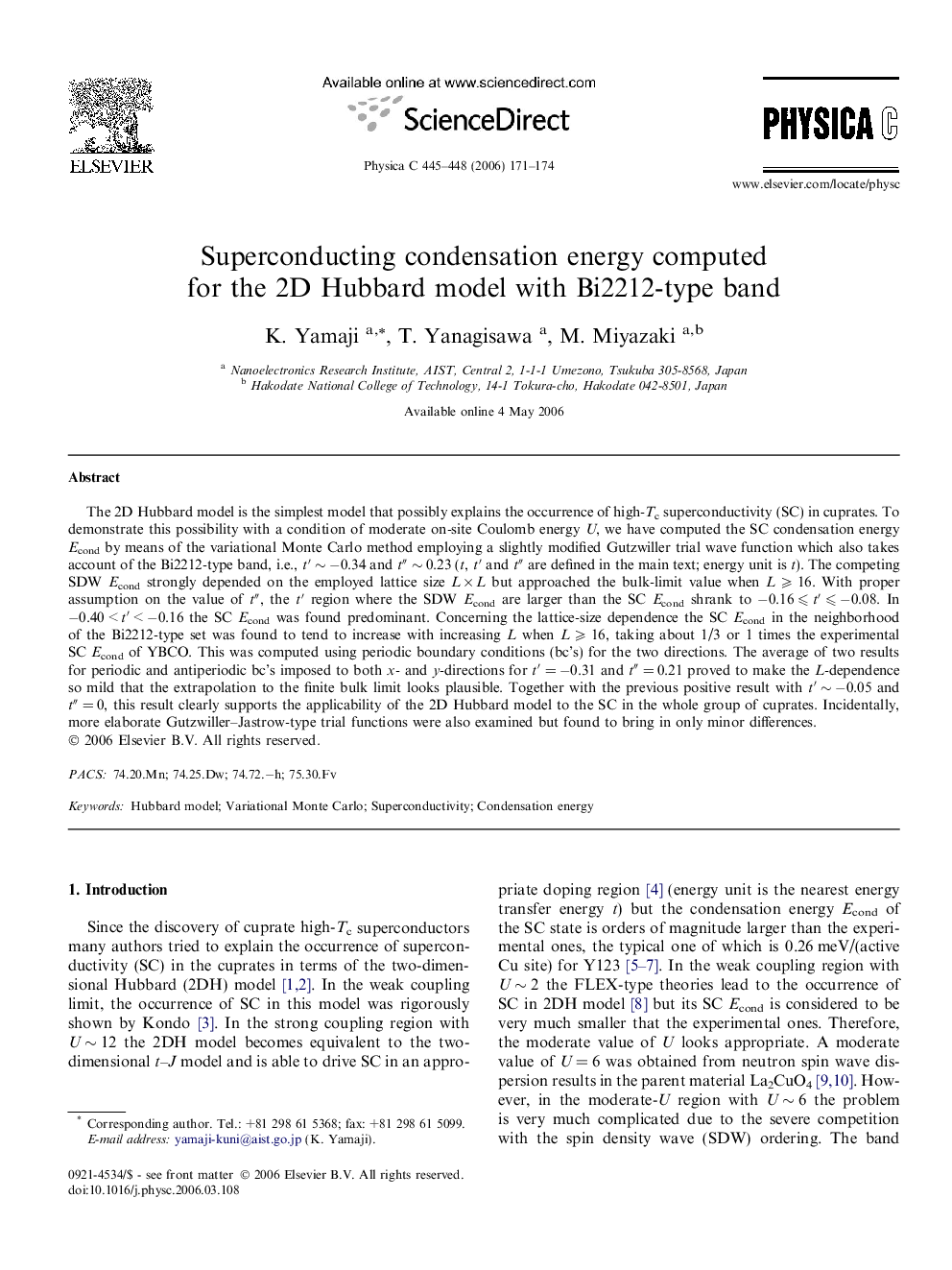| Article ID | Journal | Published Year | Pages | File Type |
|---|---|---|---|---|
| 1820329 | Physica C: Superconductivity and its Applications | 2006 | 4 Pages |
Abstract
The 2D Hubbard model is the simplest model that possibly explains the occurrence of high-Tc superconductivity (SC) in cuprates. To demonstrate this possibility with a condition of moderate on-site Coulomb energy U, we have computed the SC condensation energy Econd by means of the variational Monte Carlo method employing a slightly modified Gutzwiller trial wave function which also takes account of the Bi2212-type band, i.e., tâ²Â â¼Â â0.34 and tâ³Â â¼Â 0.23 (t, tâ² and tâ³ are defined in the main text; energy unit is t). The competing SDW Econd strongly depended on the employed lattice size L Ã L but approached the bulk-limit value when L ⩾ 16. With proper assumption on the value of tâ³, the tâ² region where the SDW Econd are larger than the SC Econd shrank to â0.16 ⩽ tâ²Â ⩽ â0.08. In â0.40 < tâ²Â < â0.16 the SC Econd was found predominant. Concerning the lattice-size dependence the SC Econd in the neighborhood of the Bi2212-type set was found to tend to increase with increasing L when L ⩾ 16, taking about 1/3 or 1 times the experimental SC Econd of YBCO. This was computed using periodic boundary conditions (bc's) for the two directions. The average of two results for periodic and antiperiodic bc's imposed to both x- and y-directions for tâ²Â = â0.31 and tâ³Â = 0.21 proved to make the L-dependence so mild that the extrapolation to the finite bulk limit looks plausible. Together with the previous positive result with tâ²Â â¼Â â0.05 and tâ³Â = 0, this result clearly supports the applicability of the 2D Hubbard model to the SC in the whole group of cuprates. Incidentally, more elaborate Gutzwiller-Jastrow-type trial functions were also examined but found to bring in only minor differences.
Keywords
Related Topics
Physical Sciences and Engineering
Physics and Astronomy
Condensed Matter Physics
Authors
K. Yamaji, T. Yanagisawa, M. Miyazaki,
